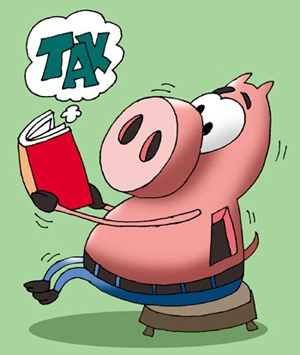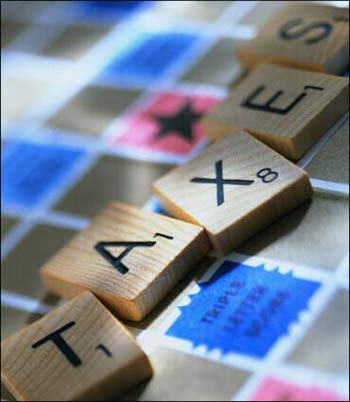
Salaried executive receive various types of allowances from their employers. As per the Income Tax Act some allowances are exempted, others are liable to income tax.
For example, conveyance allowance, helper or attendant allowance, daily allowance and uniform allowance are some of the allowances that are completely exempt from income tax in the employee's hands.
Typically, these allowances are not even added to the employee's income. Generally, once the employee gives a declaration to his employer that he has fully spent the allowance, the matter is considered closed.
However, it is often observed that many employees make investments out of such tax-free allowances. A question now arises whether the investments made by an employee out of the tax free allowances will cause any problem with the income tax authorities.
The answer is yes.
It should be remembered that tax-exempt allowances would be exempted only to the extent they are fully spent for the purpose for which they are granted.
Click NEXT to find out what happens if you save any of your allowances. . .

For example, if you receive conveyance allowance of, say, Rs 4,000 per month, you are supposed to spend the entire amount on conveyance. You are not supposed to save any money out of his conveyance allowance.
If you save some part of the allowance, you are then liable to pay income tax on the amount you save and invest in any of the movable or immovable assets.
Maintaining bills and vouchers in respect of the expenditure is not that important; what is most important is that there should be adequate withdrawal of funds to meet the expenditure on the particular head for which allowances were so received or recovered from the employer.
If there is a lapse on the part of the employee in withdrawing the appropriate amount for expenditure relating to the allowance, the onus then is on the taxpayer to explain as to how the relevant expenditure was met.
For example, if an employee received, say, a helper allowance of Rs 4,500 per month, deposited the same in his bank, and did not make any withdrawal for meeting the expenditure on a helper or attendant, then he is liable to be taxed on this allowance because no money was apparently spent by the employee in incurring expenditure on helper or attendant, etc.

It might be possible that the employee would have given a certificate to his employer merely stating that the entire amount was fully spent by him towards payment for a helper or attendant.
If, however, an actual scrutiny of the bank account and other connected tax papers reveals that no portion of the allowance was spent by the employee -- and there was no other source available with the employee to prove the incurring of the expenditure -- the entire allowance amount received would become taxable in the hands of the employee.
Thus, any investment made by the employee out of the unspent allowance would be treated as unexplained investment and would be added to his total income. This type of addition by the Assessing Officer would also attract penalty.
To avoid any such problem, salaried employees should ensure that the allowances received from the employer are fully spent for the purpose for which they are provided. This is possible by making specific withdrawal for meeting the particular expense representing a particular allowance.

This situation would also be true in respect of allowances that are otherwise not fully exempted but are exempted based on actual re-imbursement.
Let us say an employee were to receive Rs 6,200 by cheque from his employer on account of reimbursement of medical expenses incurred by him. This cheque of Rs. 6,200 is deposited in the bank account of the employee and the employee does not withdraw this money and consequently makes investments out of his bank balance then the Assessing Income Tax Officer will be within his rights to bring to tax this amount of Rs 6,200, although the employer might not have made any addition to the taxable salary income.
To avoid such unpleasant surprises it is recommended that there should be specific, or at least adequate, withdrawal for meeting expenses in respect of the designated allowance and reimbursements received by a salaried employee from his employer.
It would be even better if specific withdrawals were made from the bank account for specific purposes. In case there is no such specific withdrawal, nor any evidence available with the employee to substantiate that he has actually incurred the expenses in respect of the various allowances and reimbursements, it would then be incumbent on the employee to give satisfactory explanation and answer to the Assessing Officer at the time of income tax assessment as regards the source of funds for meeting the expenditure in respect of the allowance received.
If, for example, you received certain gifts during the year and incurred expenditure from out of the gifted amount towards meeting the expenses, then a proper explanation should be accorded to the income tax department.

Salaried employees often face such problems in the case of house rent allowance received from the employer. It is a well-known fact that house rent allowance is not exempted from income tax unless you have actually paid the rent.
Suppose an employee receives a house rent allowance of Rs 5,000 per month and lives in a house, which is owned by his wife. He informs his employer that he has made payment of Rs 5,000 per month to the landlady, who happens to be his wife. A receipt to this effect signed by the wife is given to the employer.
Now the employer within the framework of income tax law grants tax exemption of deduction in respect of the house rent allowance paid to the employee, but a glance at the bank account of the employee reveals that in fact he did not pay the rent amount to his wife and that the house rent allowance received from his employer was actually deposited in his bank and, subsequently, utilized to purchase certain shares of new issues of a company.
Thus, the employee made investment in the stock market out of the house rent allowance so received by him from his employer. In this situation the income tax department will bring to tax the entire house rent allowance so received by the employee because the expenditure was actually not incurred.

To pre-empt such complications, and consequential additions to the tax in the case of salaried executives, it is recommended that you should prepare a 'cash flow chart' containing a summary of all the receipts during the year comprising different allowances and, likewise, on the other side there should be details with regard to the expenditure incurred under various heads.
If the Assessing Officer were to question as to how the expenditure was met in respect of particular allowance received, you can then easily substantiate your case by referring to this cash flow statement.
And although it is not legally compulsory to furnish a cash flow chart, it might be worthwhile if such a cash flow statement is enclosed with the income tax return.
In conclusion, salaried executives should be very careful with regard to making investments especially out of their tax-free allowances and reimbursements.
They should ensure that the tax-free allowances they receive are actually spent. If not spent, the amount should be brought to tax. Thus, if any investment is made out of unspent tax-exempt allowances, etc. not only would you have to pay tax on that amount, but also possibly penal interest and penalty.
[Excerpt from 51 Tax Tips for Investors by Subhash Lakhotia. Published by Vision Books.]
(C) All rights reserved